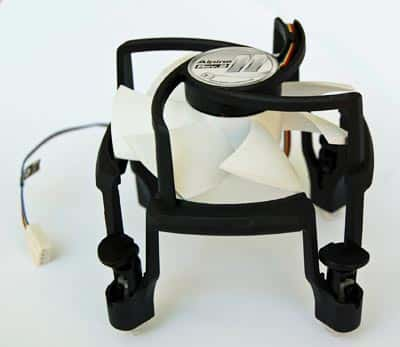 While LED lights have brought about a sea of improvement in the efficiency of lighting systems we use every day, we do not hear of similar achievement in the area of fans. Along with inefficient incandescent bulbs, manufacturers have stuck with the same design of the DC or AC fan for a long time. Things are beginning to look up now.
While LED lights have brought about a sea of improvement in the efficiency of lighting systems we use every day, we do not hear of similar achievement in the area of fans. Along with inefficient incandescent bulbs, manufacturers have stuck with the same design of the DC or AC fan for a long time. Things are beginning to look up now.
AC motors have two windings, one on the stator and the other on the rotor, which create the magnetic fields that interact with each other. A capacitor provides the initial phase-shift in the magnetic field produced by the stator and this allows the fan to start rotating. Using two windings to create the interacting magnetic fields consumes additional energy, making an AC fan inefficient.
DC fans usually have a permanent magnet for the stator. There is only one winding on the rotor, which creates the magnetic field to interact with the permanent magnetic field of the stator. Unlike the AC motor, additional energy is not required to produce the stator’s magnetic field of a DC motor. That reduces the basic energy consumption of a DC motor by about 30% compared to that consumed by a similarly rated AC motor.
To react with the fixed magnetic field of the stator and induce shaft rotation, the current direction in the rotor of a traditional DC motor is switched using a commutation ring and carbon brushes. Mechanical friction and electrical sparking during commutation is the main cause for lowering the efficiency of traditional DC motors.
Although there have been brushless DC motors present for several years, the need for a separate DC power supply has precluded the prolific use of these higher efficiency motors. Adding a rectifier for using these motors only on AC supplies has proved to be both expensive and complex. Now brushless DC motors are available with integrated electronics that allow fans to be operated directly from the AC mains supply, while simultaneously providing a means of controlling the speed of the fan by regulating the power to the fan motor.
To control the fan motor without loss of accuracy or efficiency, the integrated electronics control has to monitor the motor speed continuously and adjust the control input. As the circuitry is accessible to external control, simple speed control options are possible. For example, sensors that provide 4-20mA or 0-10V/PWM input can easily control the fan speed in a closed loop while responding to temperature, pressure or any other chosen parameter. The fan also supplies the DC voltage for the sensor, so no extra power supply is necessary. As there are no triacs or frequency inverters used, no RFI or whining noises are generated.
When a fan is run any faster than necessary, it wastes a lot of energy. When you double the speed of a fan, the power input to its motor increases by a factor of eight. Therefore, for most efficient use, the speed must match the demand. That makes electronic speed control/modulation a potential candidate for huge energy savings.
Manufacturers design AC fans to operate at a specific point on the motor’s performance curve and this coincides with their peak efficiency. Efficiency of AC motors can drop off drastically when operated on either side of this operating point. Modern brushless DC motors have an almost flat efficiency curve.
